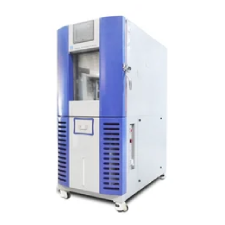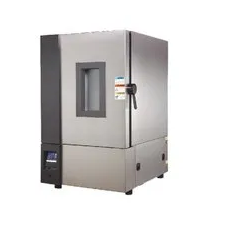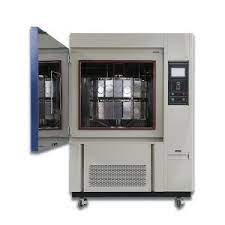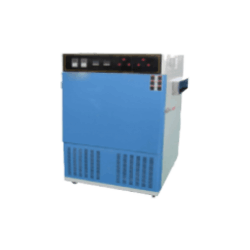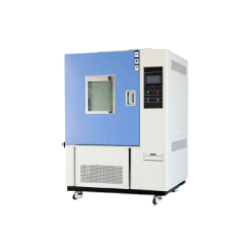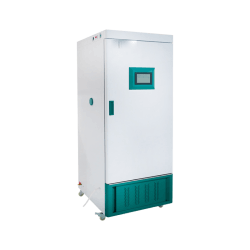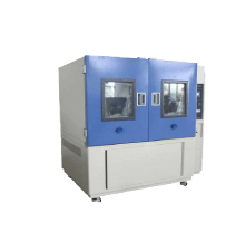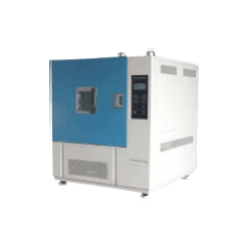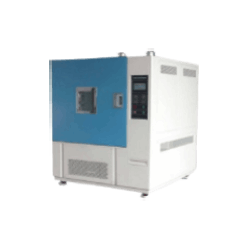Laboratory Test Chambers
We are dedicated to engineering excellence, producing a comprehensive range of cutting-edge laboratory chambers meticulously designed to meet the diverse needs of modern industries. From temperature and humidity test chambers to xenon, salt spray, UV, aging, high and low temperature, sand, drug, and ozone test chambers, we have you covered with the latest in testing technology.
Our Laboratory test chambers are crafted with utmost precision and reliability, ensuring consistent and accurate results every time. Whether you’re testing the durability of materials, evaluating the effects of environmental factors, or conducting quality assurance assessments, our laboratory test chambers deliver unparalleled performance and peace of mind.
We understand the importance of reliability, efficiency, and precision in laboratory testing. That’s why we continuously strive to innovate and improve, pushing the boundaries of testing technology to deliver solutions that exceed expectations.

About Us
Ensuring Product Safety and Reliability
Backed by years of research and development, our chambers are built to withstand the most rigorous testing conditions while maintaining optimal efficiency and safety standards. With user-friendly interfaces and advanced control systems, our chambers empower researchers, engineers, and quality control professionals to achieve their testing objectives with ease and confidence.
Our extensive range of test chambers include Temperature and humidity test chamber, Xenon test chamber, Salt spray test chamber, UV test chamber, Aging test chamber, Rain test chamber, High and low temperature chamber, Sand test chamber, Drug test chamber and Ozone test chamber. These chambers are capable to simulate environmental conditions to test various products.
Sand Test Chamber
| Temperature range : Ambient to + 50 ℃ |
| Relative Humidity : < 30 % RH |
| Normal wire diameter : 50 um |
| Normal width of a gap between wire : 75 um |
| Temperature range : Ambient to + 50 ℃ |
| Relative Humidity : < 30 % RH |
| Normal wire diameter : 50 um |
| Normal width of a gap between wire : 75 um |
| Temperature range : Ambient to + 50 ℃ |
| Relative Humidity : < 30 % RH |
| Normal wire diameter : 50 um |
| Normal width of a gap between wire : 75 um |
Ozone Test Chamber
| Temperature range : 0℃ ~ 100℃ |
| Humidity Range : 30 % – 98 % R.H |
| Fluctuation Rate: ± 0.5 ℃ |
| Speed Rate : Ambient ~ 0 ℃ within 20 min |
| Diameter of holder (mm) : 900 |
| Length of each side (mm) : 460 |
| Temperature Range : 0℃ ~ 100℃ |
| Humidity Range : 30 % – 98 % R.H |
| Testing Room Capacity : 326 L |
| Temperature Range : Ambient to +60°C |
| Humidity Range : 95 to 98% RH |
| Temperature Fluctuation : ± 0.5 ℃ |
Customer’s Reviews
Highly recommended for its dependable temperature control and robust build quality.
Exceptionally durable, withstands our rigorous testing demands.
Well-designed, meets all our lab's technical specifications.
Robust construction and dependable performance ensure reliable results in our laboratory.
Accurate readings and easy operation make this chamber ideal for precise testing.
This test chamber is ideal for our limited lab space. It effectively regulates temperature and humidity, enabling precise testing.
Frequently Asked Questions
Do laboratory chambers meet industry standards?
The majority of laboratory chambers adhere to industry standards such as ISO, ASTM, and IEC. It’s important to verify specific compliance with the manufacturer.
What are the uses of plant growth chambers?
Plant growth chambers are used for genetic experimentation and crop breeding. They also facilitate the study of photosynthesis and plant nutrition.
How frequently should a laboratory chamber be calibrated?
The frequency of calibration depends on usage and regulatory requirements. Typically, annual calibration is recommended, but certain applications may necessitate more frequent checks.
Which controller is responsible for operating the chamber?
Discovering the type of controller equipped with a used chamber is crucial. Is it a basic, generic controller with limited features, or is it an original manufacturer controller offering full capabilities? As the “brains” of the test chamber, the controller determines its performance. Often, third-party resellers replace the original controller with a generic one, compromising the chamber’s functionality.
What are the key applications of laboratory chambers?
They are utilized in various applications, such as pharmaceuticals, electronics testing, materials research, and biological studies.
What utility requirements does the chamber have?
Understanding the utility requirements of a used chamber is crucial to ensure compatibility with your facility’s utilities. Verify the chamber’s electrical and voltage needs, cooling method (air-cooled or water-cooled), and any additional requirements such as compressed air or liquid nitrogen. Upgrading utilities to match the chamber’s requirements can be expensive if your facility isn’t already equipped.
How to choose the right laboratory chamber for your needs?
Take into account the specific requirements of your experiments, such as temperature range, humidity control, size, and any extra features like light control. Seek guidance from the manufacturer or supplier.






